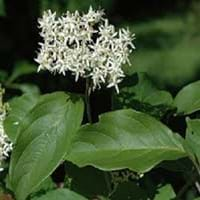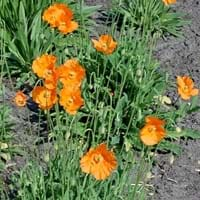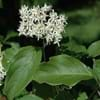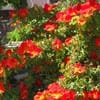Life Span
Perennial
Perennial
Type
Shrub
Flowering Plants
Origin
United States, Northeastern United States, Mid-Atlantic United States, Southeastern United States
Northern Africa, Morocco
Types
not available
Not Available
Habitat
Banks, Lake Sides, Shores of rivers or lakes
gardens, Grassland, Roadsides, tropical environments
USDA Hardiness Zone
5-8
6-8
Sunset Zone
3b, 4, 5, 6, 7, 8, 9
2b, 3a, 3b, 4, 5, 6, 7, 8, 9, 14, 15, 16, 17, 18, 19, 20, 21, 22, 23, 24
Habit
Oval or Rounded
Clump-Forming
Flower Color
Ivory
Orange
Flower Color Modifier
Not Available
Bicolor
Fruit Color
White
Not Available
Leaf Color in Spring
Green, Dark Green
Light Green, Gray Green
Leaf Color in Summer
Dark Green
Light Green, Gray Green
Leaf Color in Fall
Dark Green, Brown, Dark Red
Light Green, Gray Green
Leaf Color in Winter
Not Available
Not Available
Leaf Shape
Acuminate
Egg-shaped
Plant Season
Summer, Fall
Spring, Summer
Sunlight
Full Sun, Partial Sun, Partial shade
Full Sun, Partial Sun
Growth Rate
Medium
Medium
Type of Soil
Clay, Loam, Sand
Loam, Sand
The pH of Soil
Acidic, Neutral, Alkaline
Neutral, Alkaline
Soil Drainage
Average
Well drained
Bloom Time
Early Summer
Late Spring, Early Summer, Summer, Late Summer
Tolerances
Wet Site
Not Available
Where to Plant?
Ground, Pot
Container, Ground, Pot
How to Plant?
Cuttings, Divison, Stem Cutting
Seedlings
Plant Maintenance
Medium
Medium
Watering Requirements
Average Water Needs
Form a Soil ring to water efficiently, Requires consistently moist soil, Requires regular watering, Water Deeply
In Summer
Lots of watering
Lots of watering
In Spring
Moderate
Moderate
In Winter
Average Water
Average Water
Soil pH
Acidic, Neutral, Alkaline
Neutral, Alkaline
Soil Type
Clay, Loam, Sand
Loam, Sand
Soil Drainage Capacity
Average
Well drained
Sun Exposure
Full Sun, Partial Sun, Partial shade
Full Sun, Partial Sun
Pruning
Remove damaged leaves, Remove dead branches, Remove dead leaves
Remove damaged leaves, Remove dead branches, Remove dead leaves
Fertilizers
All-Purpose Liquid Fertilizer
All-Purpose Liquid Fertilizer
Pests and Diseases
Red blotch
Red blotch
Plant Tolerance
Drought
Drought
Flower Petal Number
Single
Single
Foliage Texture
Medium
Medium
Foliage Sheen
Matte
Matte
Attracts
Birds
Not Available
Allergy
Unknown
Skin irritation
Aesthetic Uses
Ground Cover, Wild gardens, Woodland margins
Showy Purposes
Beauty Benefits
Not Available
Not Available
Environmental Uses
Air purification
Air purification
Medicinal Uses
Not Available
Not Available
Part of Plant Used
Not Available
Whole plant
Other Uses
Acts as a natural source of rain water for birds and insects.
Culinary use, Employed in herbal medicine, Showy Purposes, Used as Ornamental plant
Used As Indoor Plant
No
Yes
Used As Outdoor Plant
Yes
Yes
Garden Design
Foundation, Hedges, Mixed Border, Screening, Wind Break
Alpine, Mixed Border, Rock Garden / Wall, Wildflower
Botanical Name
CORNUS amomum
PAPAVER atlanticum
Common Name
silky cornel
Atlas Poppy, Moroccan Poppy
In Hindi
Kinnikinnick
मोरक्को के पोस्ता
In German
Kinnikinnick
marokkanische Poppy
In French
Kinnikinnick
Poppy marocaine
In Spanish
Kinnikinnick
marroquí amapola
In Greek
Kinnikinnick
μαροκινή παπαρούνας
In Portuguese
Kinnikinnick
Moroccan Poppy
In Polish
Kinnikinnick
marokański Poppy
In Latin
Kinnikinnick
Moroccan Poppy
Phylum
Magnoliophyta
Magnoliophyta
Class
Magnoliopsida
Magnoliopsida
Order
Cornales
Ranunculales
Family
Cornaceae
Papaveraceae
Clade
Angiosperms, Asterids, Eudicots
Angiosperms, Eudicots
Tribe
Not Available
Not Available
Subfamily
Not Available
Paperveroideae
Number of Species
Not Available
Season and Care of Kinnikinnick and Papaver atlanticum
Season and care of Kinnikinnick and Papaver atlanticum is important to know. While considering everything about Kinnikinnick and Papaver atlanticum Care, growing season is an essential factor. Kinnikinnick season is Summer and Fall and Papaver atlanticum season is Summer and Fall. The type of soil for Kinnikinnick is Clay, Loam, Sand and for Papaver atlanticum is Loam, Sand while the PH of soil for Kinnikinnick is Acidic, Neutral, Alkaline and for Papaver atlanticum is Neutral, Alkaline.
Kinnikinnick and Papaver atlanticum Physical Information
Kinnikinnick and Papaver atlanticum physical information is very important for comparison. Kinnikinnick height is 180.00 cm and width 180.00 cm whereas Papaver atlanticum height is 30.50 cm and width 20.30 cm. The color specification of Kinnikinnick and Papaver atlanticum are as follows:
Kinnikinnick flower color: Ivory
Kinnikinnick leaf color: Green and Dark Green
Papaver atlanticum flower color: Orange
- Papaver atlanticum leaf color: Light Green and Gray Green
Care of Kinnikinnick and Papaver atlanticum
Care of Kinnikinnick and Papaver atlanticum include pruning, fertilizers, watering etc. Kinnikinnick pruning is done Remove damaged leaves, Remove dead branches and Remove dead leaves and Papaver atlanticum pruning is done Remove damaged leaves, Remove dead branches and Remove dead leaves. In summer Kinnikinnick needs Lots of watering and in winter, it needs Average Water. Whereas, in summer Papaver atlanticum needs Lots of watering and in winter, it needs Average Water.





